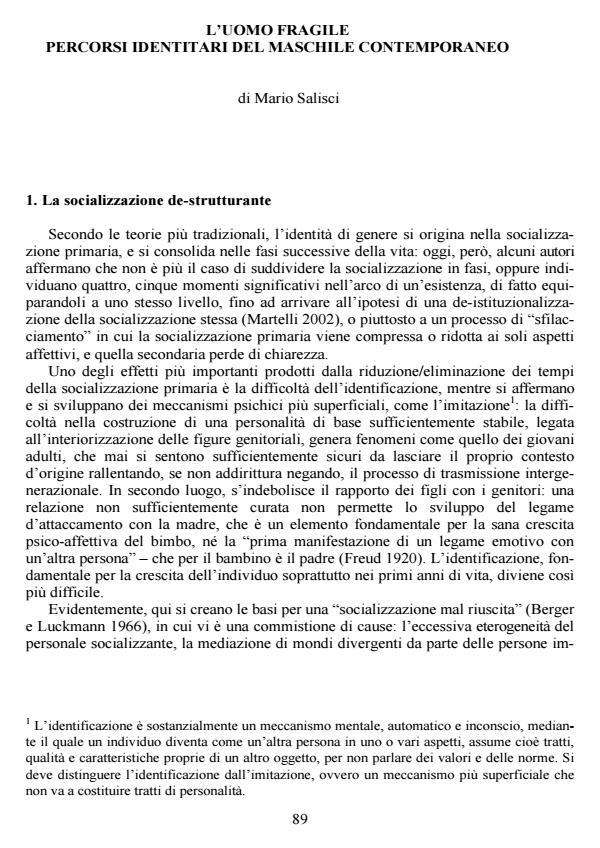L'uomo fragile. Percorsi identitari del maschile contemporaneo
Titolo Rivista SOCIOLOGIA E POLITICHE SOCIALI
Autori/Curatori Mario Salisci
Anno di pubblicazione 2006 Fascicolo 2006/3
Lingua Italiano Numero pagine 21 P. 89-109 Dimensione file 180 KB
DOI
Il DOI è il codice a barre della proprietà intellettuale: per saperne di più
clicca qui
Qui sotto puoi vedere in anteprima la prima pagina di questo articolo.
Se questo articolo ti interessa, lo puoi acquistare (e scaricare in formato pdf) seguendo le facili indicazioni per acquistare il download credit. Acquista Download Credits per scaricare questo Articolo in formato PDF

FrancoAngeli è membro della Publishers International Linking Association, Inc (PILA)associazione indipendente e non profit per facilitare (attraverso i servizi tecnologici implementati da CrossRef.org) l’accesso degli studiosi ai contenuti digitali nelle pubblicazioni professionali e scientifiche
Contemporary society crisis has recently put into light male identity fragility - and it happens for the first time indeed. This process can be defined as a conscience trouble into self-constructing within complex societal structures: a difficulty that might reveal at the same time a socialising models inefficiency and a highly complex demand for change in Western societies. In this context gender-oriented identity formation might be at risk, constrained between uncertain parenthood roles and more broaden de-structuralising social processes. Within this context the body appears to become a relevant and distinctive element in a gender oriented perspective. In this respect sport, as one of its social expression, can be investigated as a privileged domain for male identity construction and expression process. The aim of this paper is to revel and analyse in-deep emerging conceptual connections and expressions between social change, body male identity and sport.
Mario Salisci, L'uomo fragile. Percorsi identitari del maschile contemporaneo in "SOCIOLOGIA E POLITICHE SOCIALI" 3/2006, pp 89-109, DOI: